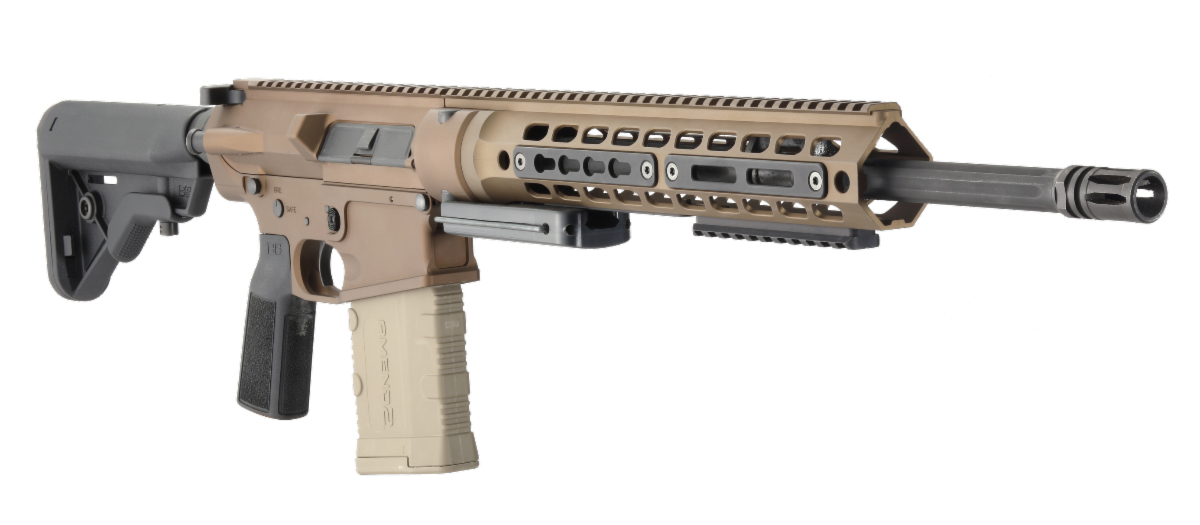It’s no secret that most people could use some more training to become proficient with their firearms. Different guns require different types of training, and it’s important we focus our efforts to see the most progress. Revolvers have their own manual of arms and require some unique tactics to deploy them effectively. Here are some tips and tricks for training with a wheel gun.
It should be noted that this refers primarily to double-action revolvers intended for defensive applications, but some of these skills can help with all-around marksmanship.
Trigger Control
Due to the revolving firing mechanism, special care must be given to the trigger action on a revolver. When the trigger is pulled in double action, not only is the hammer cocked and released, the cylinder is turned to a new chamber. That’s quite a bit of mechanics at play. Because of this, one of the most important skills to practice is proper trigger control. This ensures you do not short stroke the trigger. This happens when the trigger is pressed again before it completely resets. This will cause a click instead of a bang! To fix it, you must allow the trigger to fully release and pull again. Learning where your trigger resets will help you speed things up and prevent malfunctions.

Learning good trigger control will also help you improve your accuracy by limiting front sight and barrel movement. Staging the trigger can also help with this. Learning to stage the trigger will come naturally as you practice and get a feel for the double-action pull. As you work your way through the trigger stroke, you will feel some tension let off as the hammer reaches the end of its rearward travel. This is unique to your gun, as every revolver will have a different ‘shelf’ to rest on. I typically notice Ruger revolvers have a more pronounced shelf, whereas Colt and S&W examples have a smoother pull straight through. If you memorize the feeling of where this point is, you can stage the trigger to this point in the stroke, then briefly pause as you ensure your sights are aligned and complete the press. This is typically used for target shooting or hunting, but it can have defensive applications as well.
Finally, be sure to train at firing both double-action and single-action modes. Many people make the mistake of only training with the light and crisp single-action trigger at the range. This is fine for a target handgun, but you should primarily be using double-action for self-defense. It may be frustrating at first, but try and slow things down to really get a feel for the trigger action.
Reloads
The major downside to revolvers is well known, they hold less ammunition and take longer to reload. Fortunately, this can be somewhat negated with dedicated and focused training. Pick up some speed loaders, speed strips, and, if your revolver accepts them, moon clips. Each option has its own pros and cons; speed strips sit flat in the pocket, moon clips make ejecting empties faster, speed loaders are quick to insert. Practice at the range with all three and get a feel for what works best for you. Once you develop a preference, get some snap caps and practice, practice, practice!

Do not neglect practicing and single-loading cartridges. Things happen, stuff breaks; be prepared to reload the old-fashioned way. A good drill to practice is to shoot one, reload, then shoot one. The goal is to get this process as fast and smooth as possible (with accurate hits). Set up by loading one cartridge in the cylinder, setting it to fire first (to the left of the barrel on Colt style, to the right on others). Next, set up your individual spare cartridges or loader depending on what type of reload you want to practice. If possible, set them up how you would actually carry (i.e. loose rounds in pocket, speed loader in pouch, etc.). Set the target back 7-12 yards, and when you’re ready, present the gun, fire once, reload, then fire again. To focus on practicing the reload process and conserve your ammunition, limit yourself to firing one round each time. If you want to focus more on the defensive engagement, you could fire a full cylinder each time.
Additionally, be sure you know how to open and close the cylinder without causing excessive wear or damage. In a real defensive encounter this may go out the window, but it’s good to practice now to build muscle memory and prevent damage to your firearm while training. Always completely press the cylinder release before pressing out the cylinder. This prevents lateral force and stress on the center pin and lockup points.
Pay attention to the direction you rotate the cylinder notches. Rotate the cylinder stop bolt into the ramped section of the notches (the same direction the cylinder rotates while firing), don’t round off that 90-degree edge on the shallow side. Keep good control over the cylinder while manipulating it to prevent damage and speed up your reloads.
Grip
A good grip is essential on all firearms. It is your main interface with the firearm and is the source of all your control. Revolvers have their own unique design and shape, and therefore require their own grip. Be sure to keep your fingers away from the cylinder gap. This is the small section between the end of the cylinder and beginning of the barrel. If your finger is too close, you just may lose it (especially with magnum rounds).

A real problem with a weak grip and revolvers is muzzle flip. The bore of a revolver sets higher above the hand, which makes muzzle flip daunting. Some shooters prefer to ride magnum recoil through the wrist by letting the pistol rise a little. A common problem is ‘heeling.’ As the revolver is fired, the hand grip slides up on the backstrap during recoil. When the revolver is gripped too high, it will typically cause you to pull your shots high. A firm grip will solve this problem. It’s important to lock both the firing-hand grip and the support-hand wrist as well. Don’t neglect this important step. The firing grip, the wrist, and to an extent the elbow, become locked solid. It is ok for the elbow to flex a little — recoil has to be bled off — but it is bad news to allow the wrist to flex.
Malfunctions
As I mentioned earlier with short stroking the trigger, revolvers have their own specialized set of malfunctions they are susceptible to. They also require a different manual of arms to clear these malfunctions.
One of the most noticeable is when you encounter a dud round or failure to fire. Instead of the typical tap-rack you’d perform on a semi-auto pistol, simply pull the trigger again. This rotates the cylinder and fires a new round.

Further, you may experience a lock up if your cylinder is out of place. This can happen when the crane is not fully closed or if the cylinder notches are not aligned with the bolt that locks them into place. If this is the case you will not be able to pull the trigger. To fix this, use your support hand to press and rotate the cylinder into place, and fire again.
Additionally, the crane can become damaged if the cylinder is repeatedly flung open or slammed closed. The shock produced can damage components and affect the fitment between parts. It doesn’t take a ton of repetitions to begin to see damage. This can cause lockup and timing issues and will require a gunsmith to fix.
A sloppy or angled strike to the ejector rod may cause a bend, which will take your revolver out of commission. You won’t be able to close the cylinder or operate the ejector rod. When ejecting, be sure to give the rod a firm press, but do not smack it.
You may also experience a casing getting stuck under the extractor star. If a casing doesn’t fully extract, it can angle out enough that the rim slips under the star and gets reinserted. This makes your wheel gun a paperweight, as there will not be enough clearance to close the cylinder.
Final Thoughts
Just because they’re not the latest and greatest technology, doesn’t mean revolvers can’t hold their own in the modern defensive landscape. Revolvers have their own benefits, but they also have some quirks you must be aware of. By training specific revolver tactics, you can ensure you’re prepared with a wheel gun.
Do you ever deploy a wheel gun for self-defense? Do you practice any specialized revolver training? Share your experience in the Comment section.





